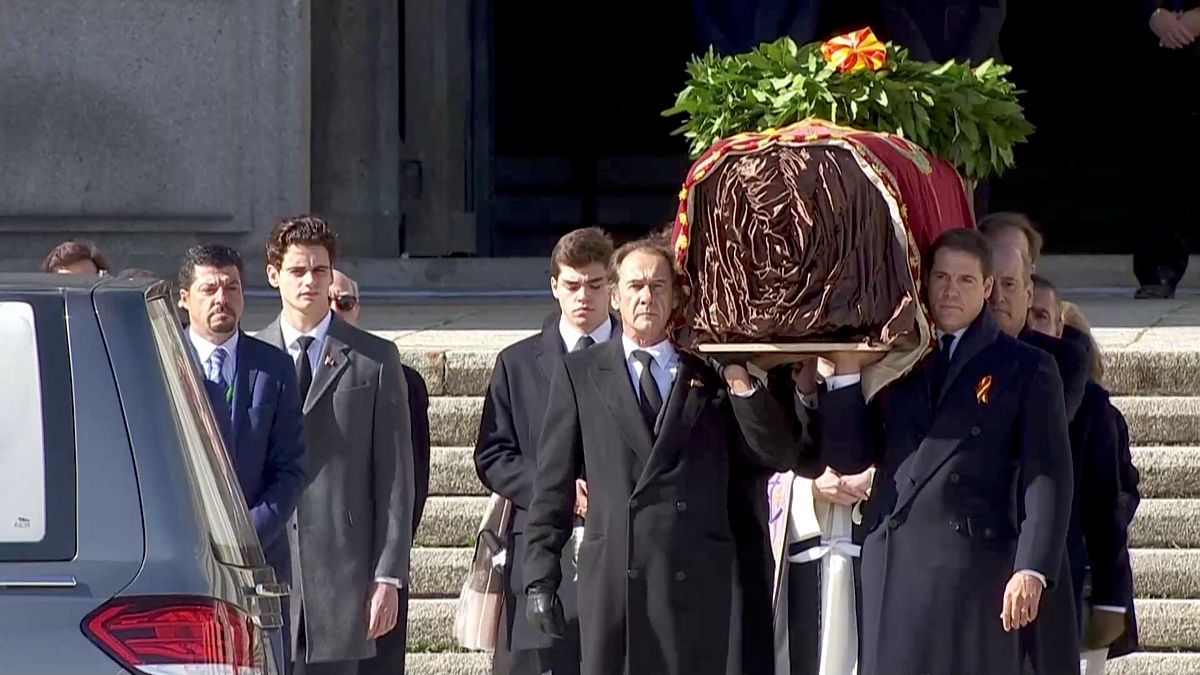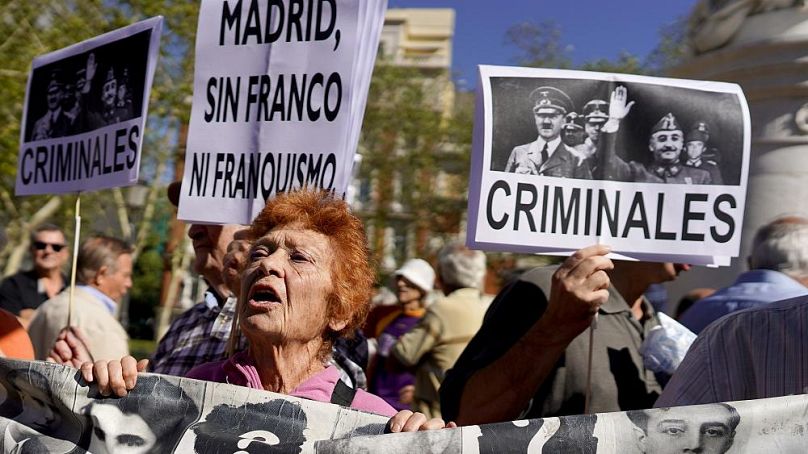Franco's coffin was flown by helicopter from the Valley of the Fallen to a cemetery outside Madrid where his wife, Carmen, is buried.
The remains of Spanish dictator Francisco Franco were exhumed from a state mausoleum and buried in a cemetery on Thursday, with acting prime minister Pedro Sanchez calling it "a step towards reconciliation".
Why is this happening?
Spain's Supreme Court ruled last month that Franco's coffin could be exhumed following a lengthy legal battle and decades of controversy.
Since the Socialist government's decision to remove Franco from the state mausoleum, the family has filed several appeals that the Supreme Court has dismissed.
Who was Franco?
Franco came to power in a 1939 coup d'état at the end of a brutal civil war. He stayed at the helm until his death in late November 1975.
He was buried in a basilica in the Valley of the Fallen — an impressive monument he commissioned during his rule to be a "national act of atonement" and for which he spared no expense. The 18-year construction carried out by political prisoners, is estimated to have cost €7 million.
About 40,000 people who died during the civil war — both nationalists and republicans — are also interred there.
Now managed by the Patrimonio Nacional heritage agency, it has become one of the most visited monuments in Spain. But Franco's burial there divides opinion as the country continues to wrestle with its past, with many saying it glorifies the late dictator.
READ MORE: Former Spanish dictator Francisco Franco's remains to be exhumed decades after death
The exhumation
The government announced that the exhumation would be carried out in the strictest of privacy. Only family members, the Minister for Justice and necessary staff are to be present.
The 1,500-kg slab that covers the tomb is to be lifted at 10:30 am local time, using four hydraulic jacks. The coffin is to remain closed — depending on its condition, it may be placed in another one — and will not be granted any military honour or be covered with a flag despite the family's wishes.
The company in charge of that part of the process has reported receiving threats by "Francoists"
The coffin was then flown by helicopter to the El Pardo cemetery, directly north of Madrid, where the remains of Franco's wife, Carmen, are located.
Official sources said that the process could take an hour, although that could be extended.
The entire exhumation and subsequent inhumation operation will have should cost the Spanish state just over €63,000.


